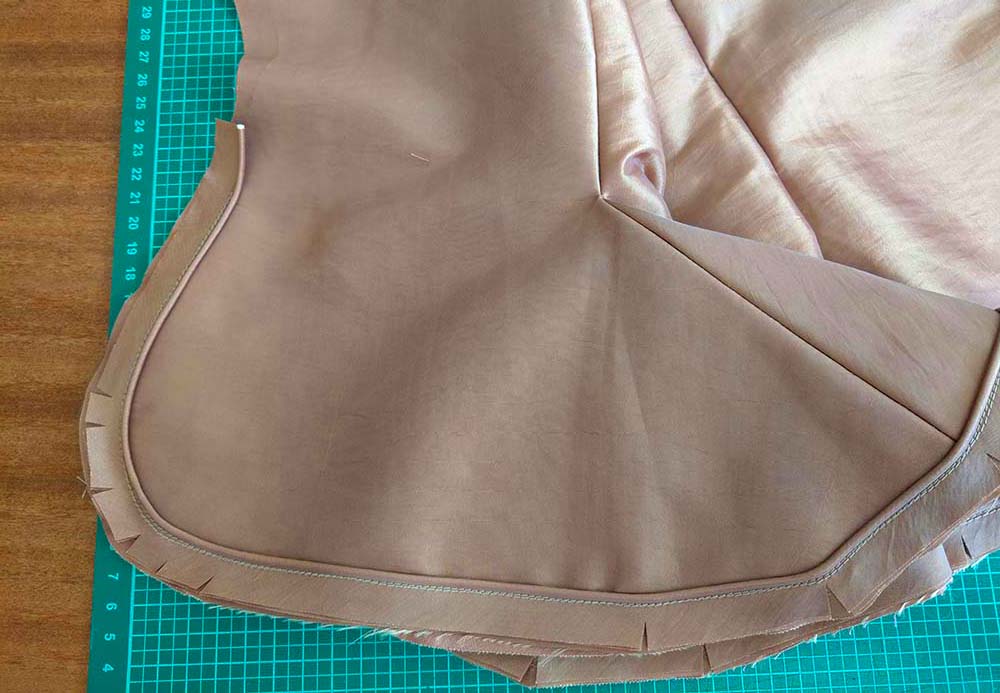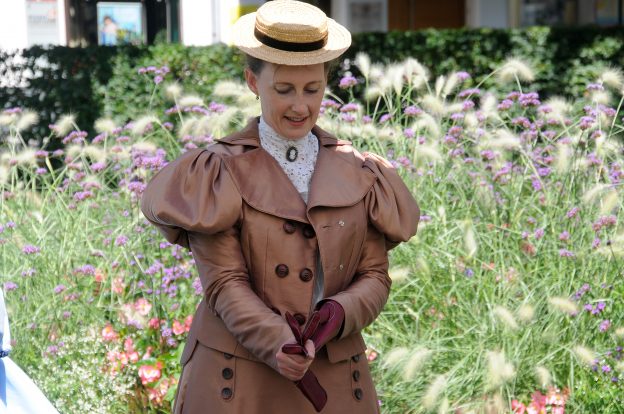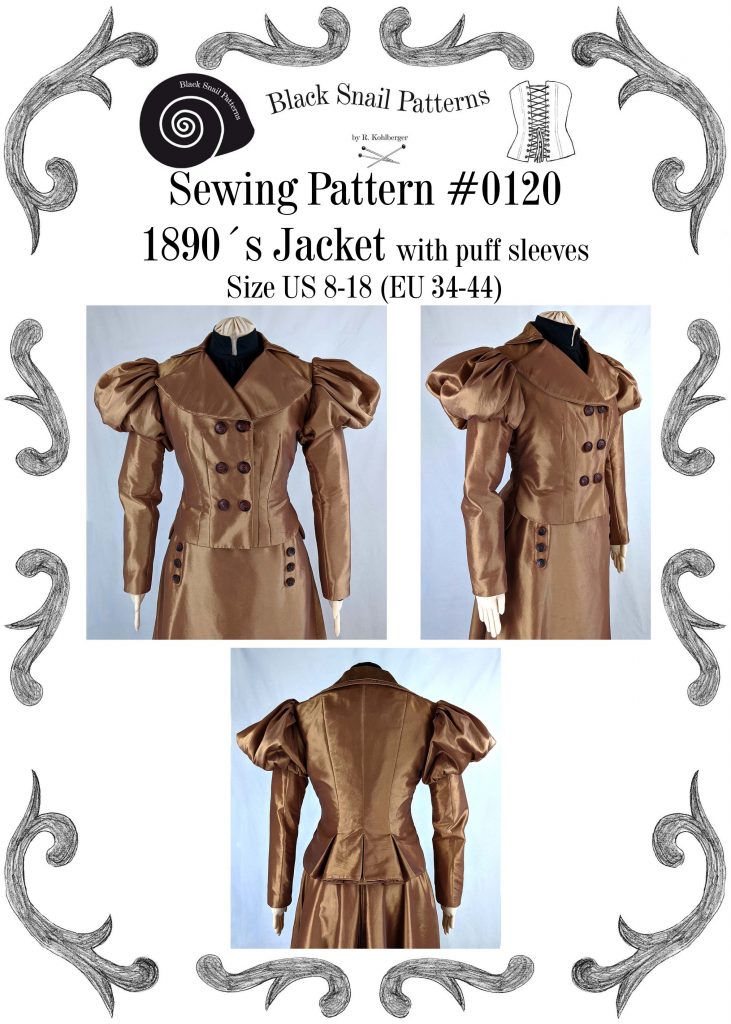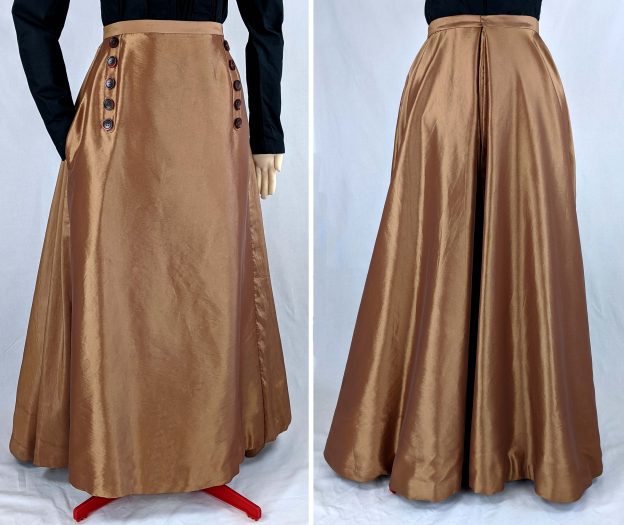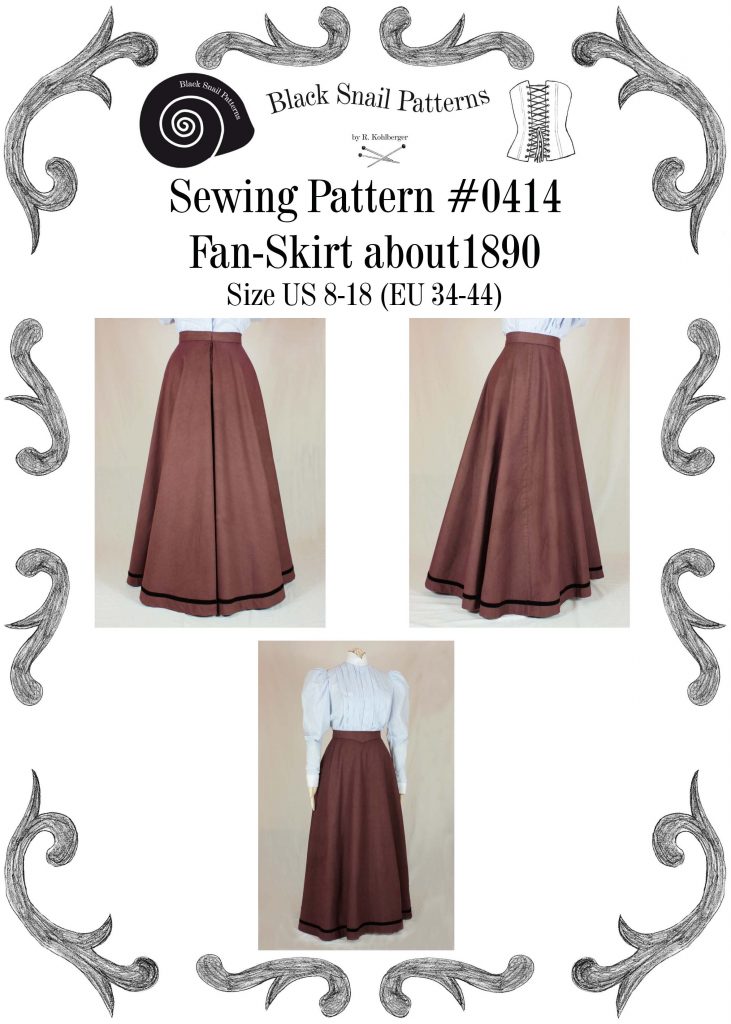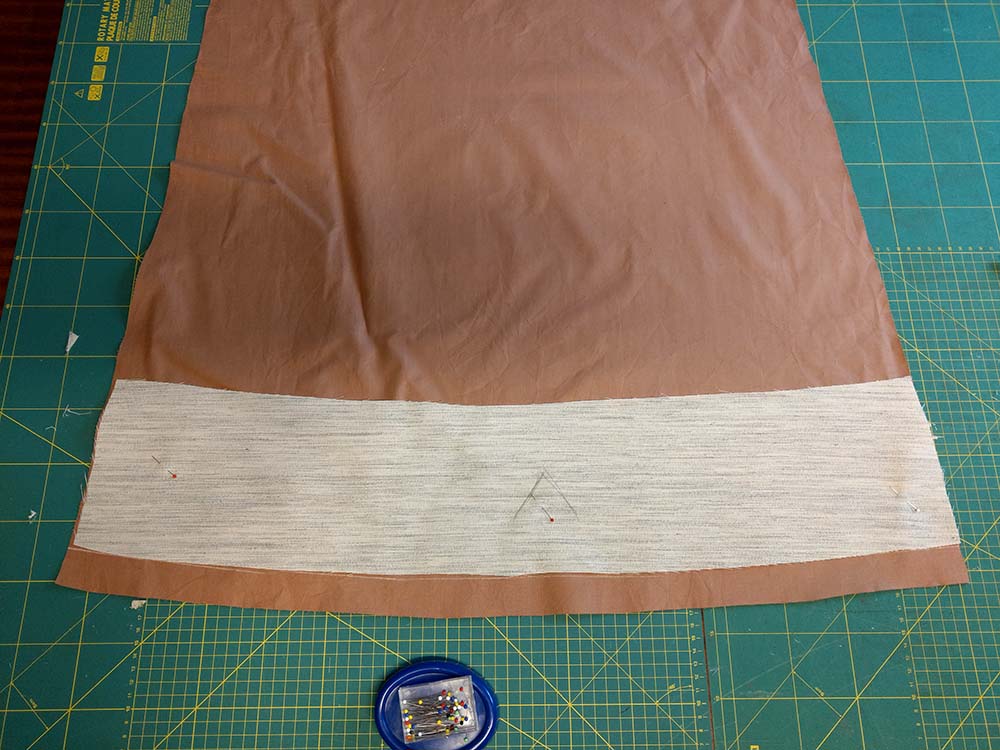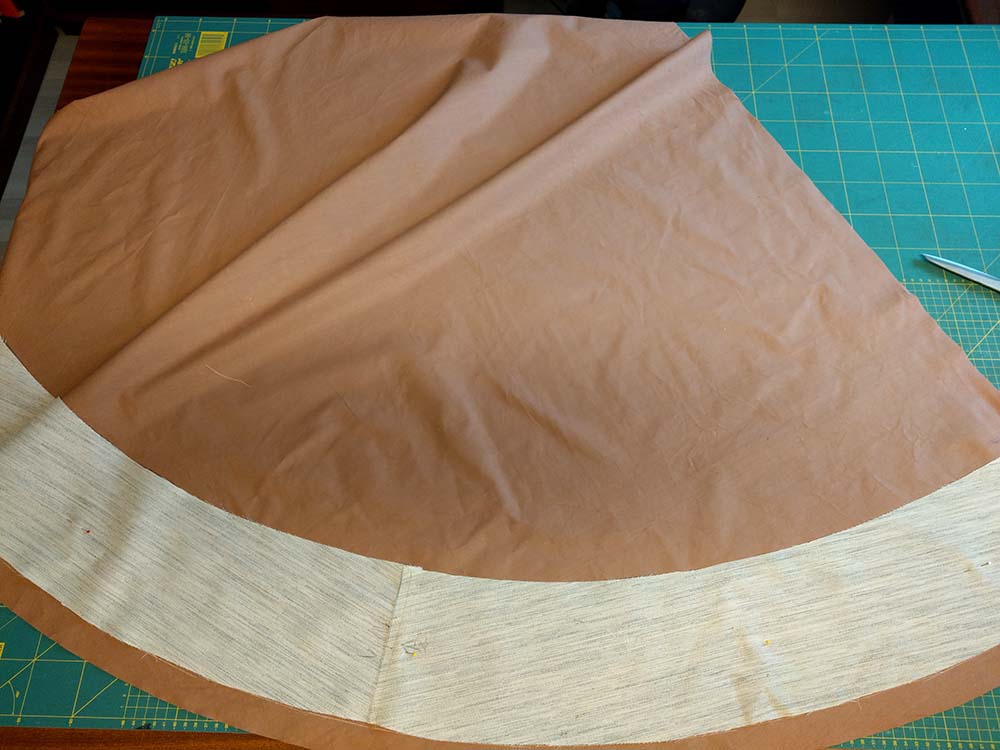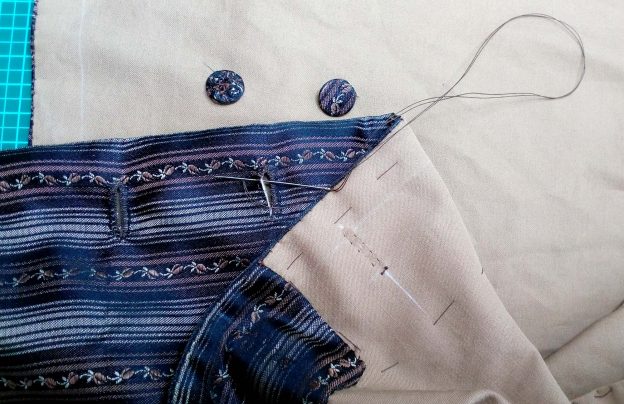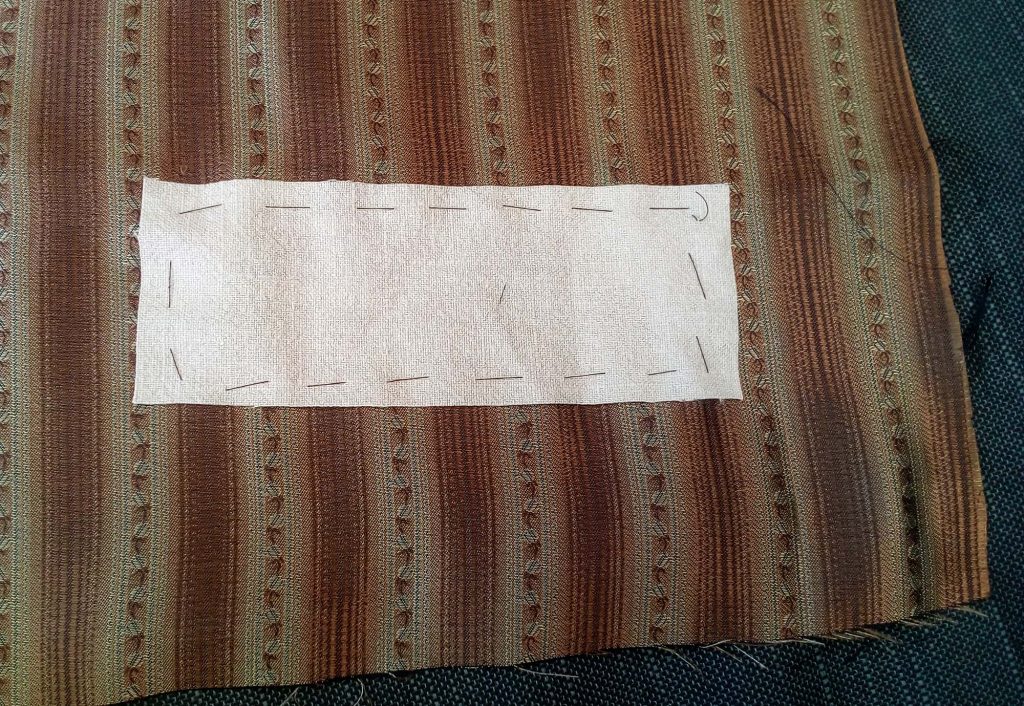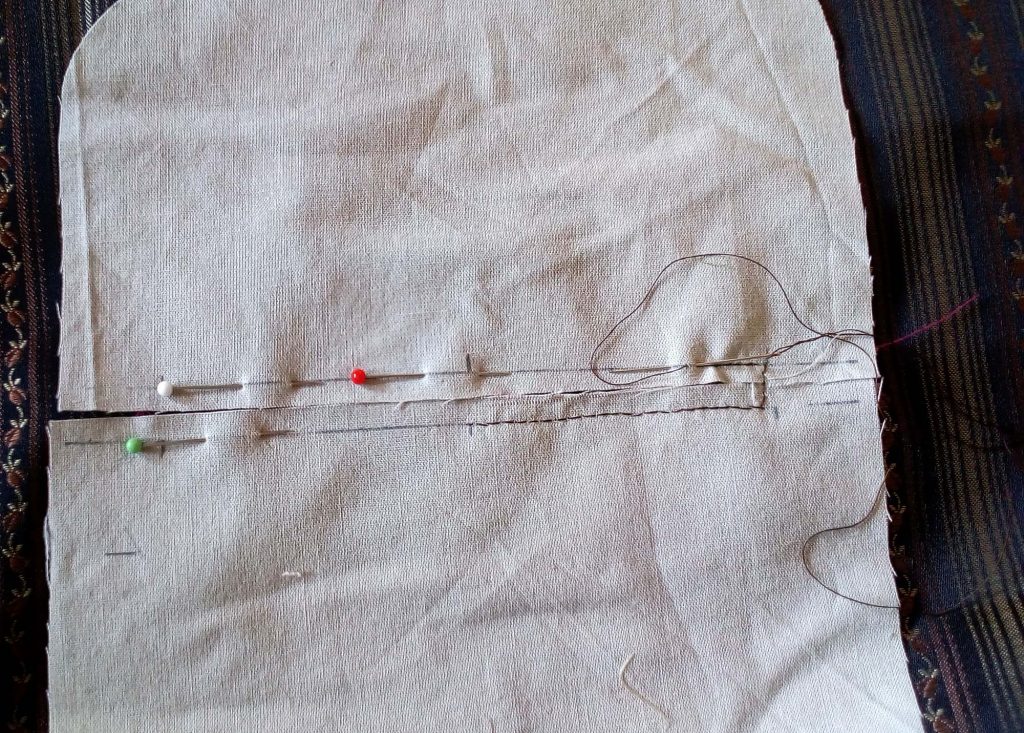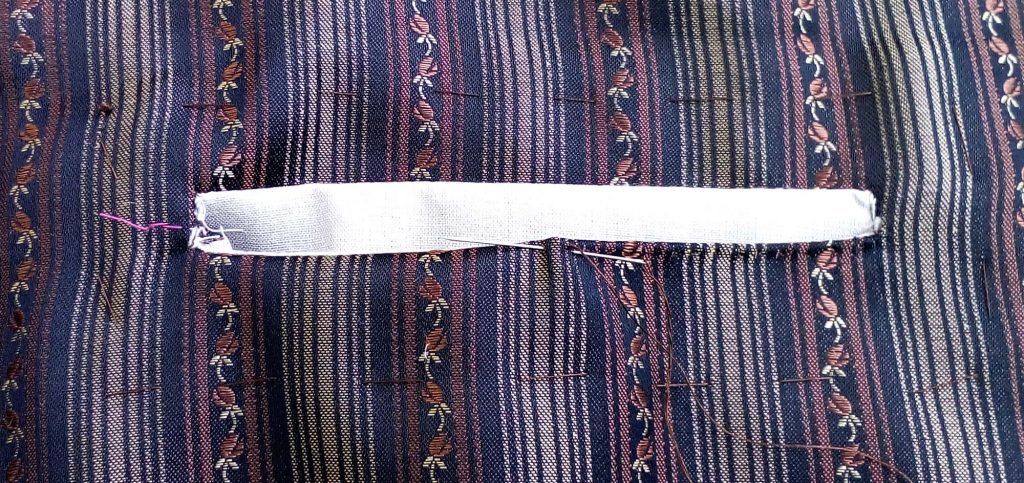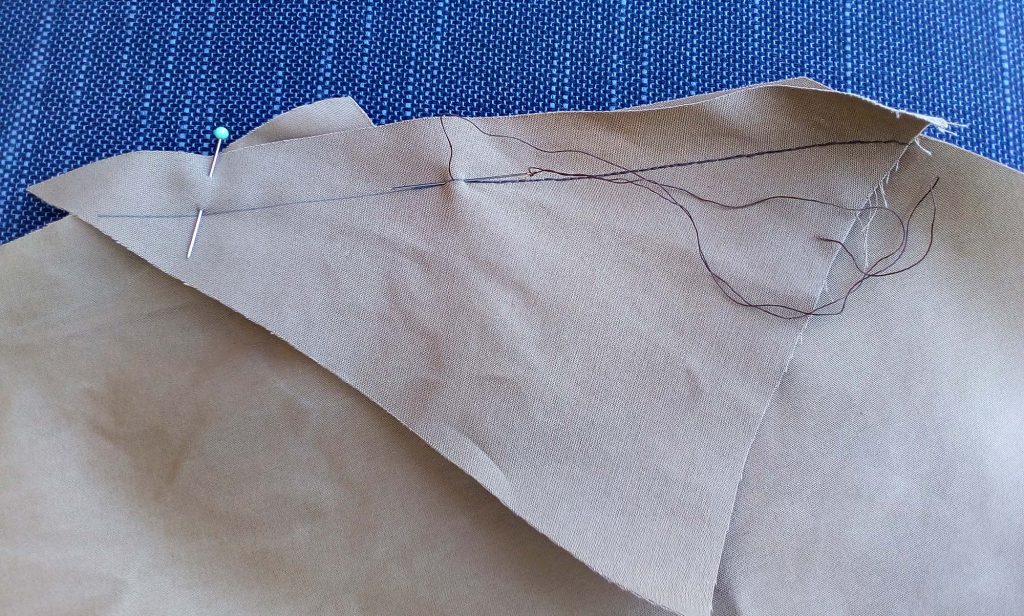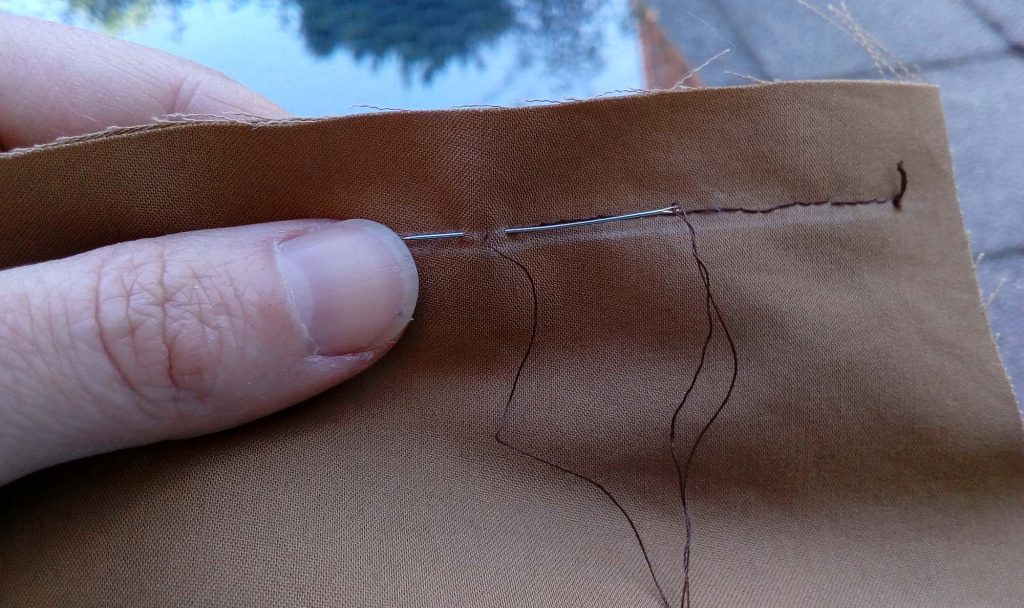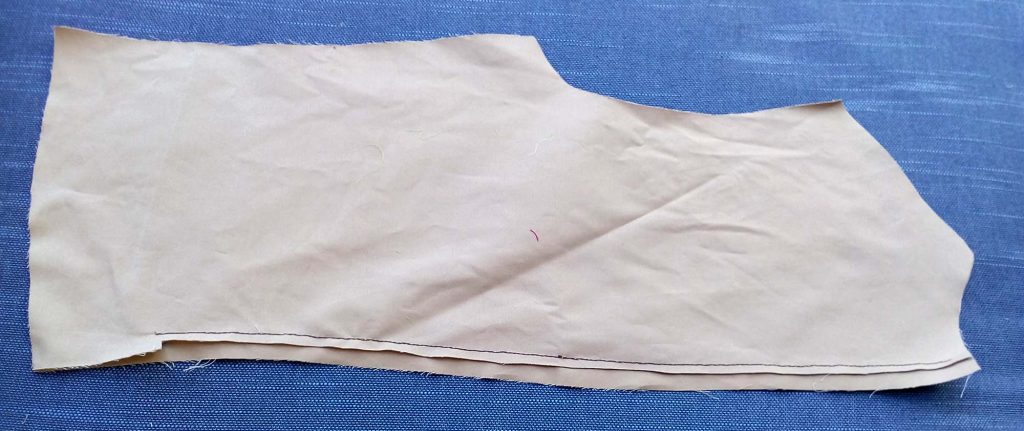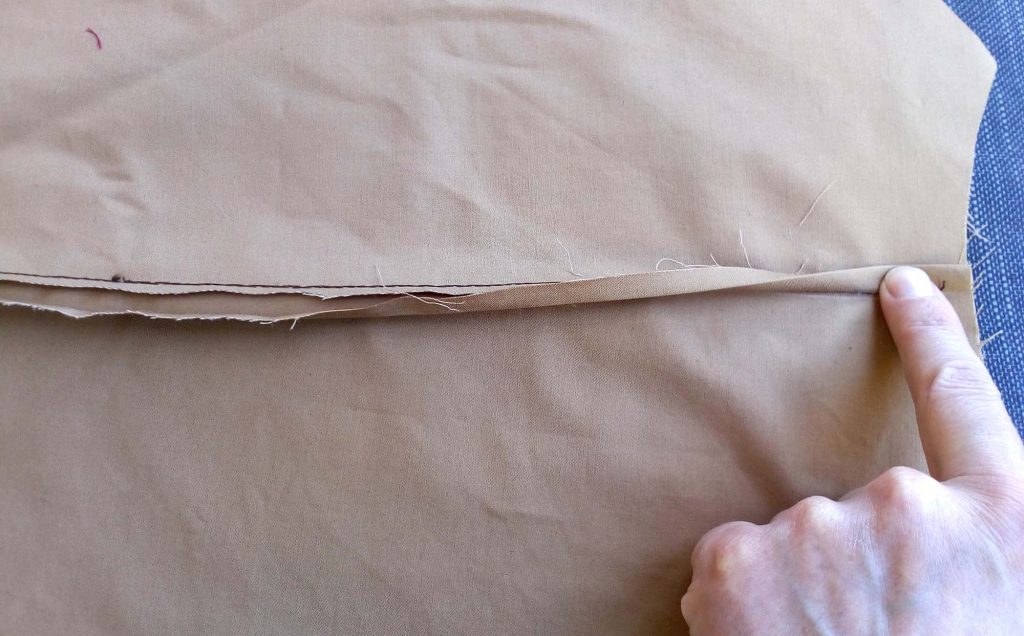Another illustrated tutorial for my newest sewing pattern #0120, showing some steps a bit different than I explained in the sewing instruction´s, just because you can make things different.
A bit about the jacket: It is a typical double breasted jacket from around 1890, with puffed sleeves and large lapels and cut narrow at the waist to emphasize the 1890´s hourglass shape. As this jacket is mentioned to be made from a lightweight fabric like silk taffeta (shame over me, I used polyester taffeta – but it served well for the event I made it for) I flatlined the entire jacket with a midweight cotton fabric. The fabric was quite hard to take good pictures from, especially with artificial light. I do not have a picture of every step described in the sewing instructions, but from all more complicated ones. Let´s start!
Here you can see the back, flatlined and sewn together, with the self-made piping from my fashion fabric lined up with the bottom edge until reaching the mark (5). I did not make pics from the piping making process, as there are so many great video tutorials on the internet. Just search for PIPING and choose your favorite one.
